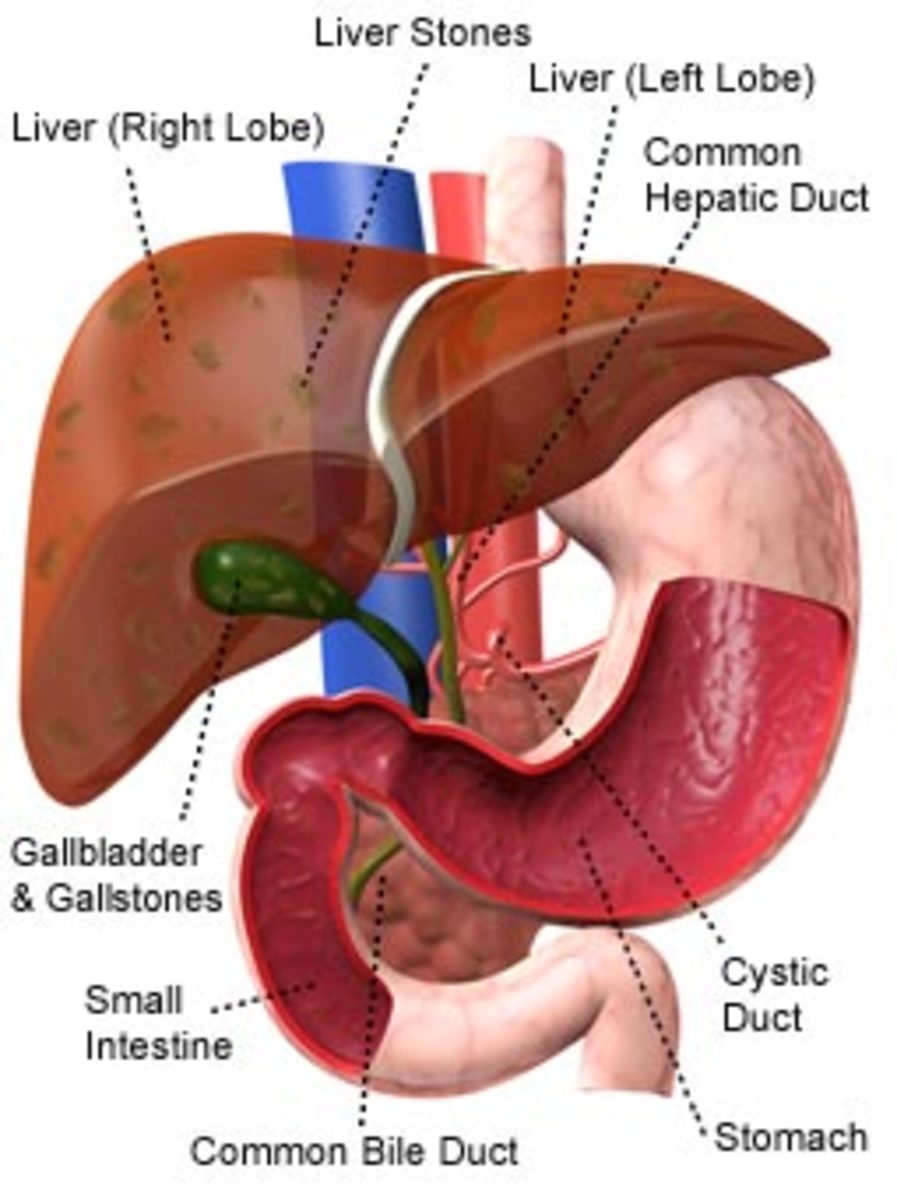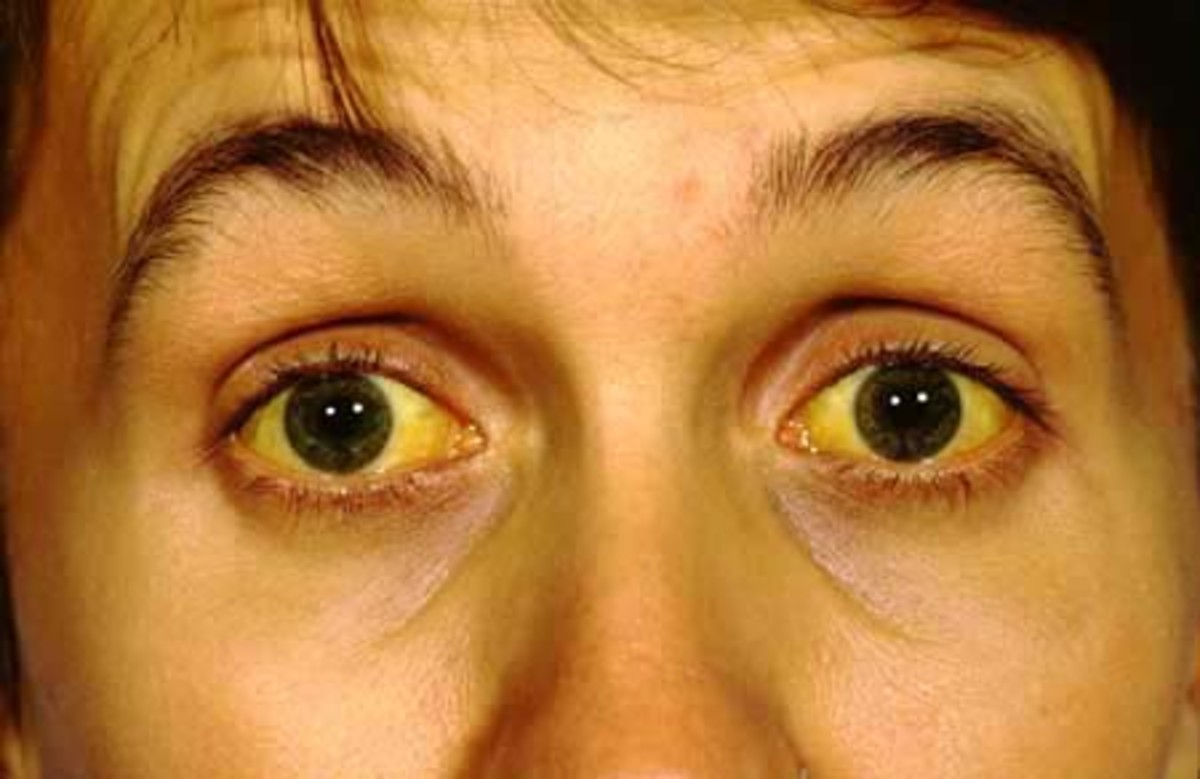Effective Managed Care Plan for Hepatitis A
Notwithstanding the latest series of disease outbreaks in North America, the rates of Hepatitis A have remained the same if not increased since 1984. Additionally, the rates can be comparable to those reported in USA during the years of 1960s and 1970s (Berger, 2011). Hepatitis A is a serious disease which affects mainly the livers of the patients. It infects the cells of the liver and causes inflammation. In most cases, most victims of this disease are hospitalized when the effects are at a severe stage. In such severe states, victims may die if not given due care. The disease which is highly contagious is believed to be spreading at a faster rate not only in North America but around the globe (CDC, 2012). Although it is widely believed that there is no reliable cure for this ailment, preventive mechanisms such as immunization and vaccinations are widely employed to curb the severity of the diseases.
As depicted in the five American states in the years of 1997 and 1999, Hepatitis A incurs in the community wide outbreaks. The American liver foundation notes that the recurring increases in hepatitis A come about in every ten years in America, but in between the outbreaks, the relatively high rates continue to be manifested. Within North America and United States in general, each state, community and county could be considered to be having low, intermediate or high rates of hepatitis A on the grounds of epidemiological characteristics. In the historical context, there are specific communities in America which are vulnerable to the risks associated with hepatitis A disease. These communities include: Alaskan Natives, Hispanic Americans, Native Americans, certain religious groups and migrant populations. However, as a result of the modern vaccination methods, these rates are now being altered (ALF, 2012).
Causes of Hepatitis A
Hepatitis A virus (HAV) is the main cause for hepatitis A disease. The disease which is contagious is transmitted when an individual inhales tiny particles of fecal substances which are contaminated. Transmission occurs in these ways: When an infected individual handles food to be eaten by another without first washing hands after visiting the toilet, drinking water which is contaminated, eating not well cooked fish or shellfish from polluted water, being in close contact with a person who is suffering from the disease and having sexual intercourse with an infected person. The (HAV) virus is a Picornavirus that harbors an RNA which is single stranded as it’s genome, and covered by a protein shell. It enters the blood system through the epithelium in the gut or mouth and transfers itself to the liver in a period of two to six weeks.
While in the liver, the virus continues to multiply itself and the several of its symptoms begin to manifest in the patient. The virus uses the ribosomes in the liver cell’s alignment for the reproduction process. This interferes with the normal functioning of the cells thus causing liver problems. If the number of the liver cells affected is high, then the symptoms will be depicted, but if the number of cells affected is low, then the symptoms may not show themselves. The HAV virus is transmitted in the GI tract by the bile which is manufactured in the liver. Many infected people may however recover from the condition with no serious liver damage (CDC, 2012).
Symptoms of Hepatitis A
Davis (2011) observes that majority of HAV have no common symptoms at all. This is because, in many instances, the symptoms may be so mild that they go undetected. Infected Children are more prone to lack of symptoms showing themselves than older people. This aspect makes the virus to spread more easily since it is difficult to differentiate between the one who is exposed and the one who is not. The symptoms may start to develop after a period of 2 to 6 weeks. These symptoms may also be not very much severe and may disappear after a short while. The most spectacular symptoms include the following: Vomiting, Nausea, Diarrhea, Pale or grey colored stools, lack of appetite, rash, fever, fatigue, Jaundice (a yellow pigmentation of the skin and whitening of the eyes), a dark brown urine, and pain in the liver area,(on the right side of the abdomen next to the rib cage.
In the case of severe vomiting for an infected person, the patient may experience dehydration. This may be extreme and life threatening to persons who are infected. Symptoms of dehydration may include the following; headaches, irritation, fatigue, feeling confused, high heartbeat rate. These hepatitis symptoms usually do not go on for more than two months, but in some case, they may go on for a period of nine months. An approximation of 15% of the patients suffering from hepatitis A portrays symptoms that come and go. However, it should be noted that one can not be infected simply by being closer to the carrier of the disease (Davis, 2012).
Diagnostic Process in hepatitis A
The medic may conduct a physical examination and may find a tender and enlarged liver. Additionally, the blood tests may indicate an increase in IgG and IgM antibodies as well as the elevated liver enzymes. In diagnosing hepatitis A, medical practitioners may undertake physical examinations and a series of blood tests to a patient. The series of blood tests is meant to evaluate the functioning of the liver. The doctor will measure certain substances in the blood to a certain the presence of HAV virus in the suspected individual. The following substances if present in the blood will show the presence of the virus.
Bilirubin: The presence of Bilirubin substance in the blood is an indicative of hepatitis. This is a yellowish pigment which in most cases is made in the liver and eventually excreted in the urine. In hepatitis patients, the liver is unable to process bilirubin and therefore, the blood level of this substance is usually high. It is this high level of Bilirubin which causes the yellowish pigmentation in the patient’s skin, recognized as jaundice.
Liver Enzymes: When a person’s liver is damaged, enzymes known as aminotransferases, including alanine (ALT) and aspartate (AST) are released into the blood system. Detection of these enzymes in the blood system is the easiest way to determine the extent of the viral infection in the body. One demerit for this system however is that the level of enzyme differs and May not always be a good indicator of the presence of the disease.
Alkaline Phosphatase (ALP): The High level of ALP depict bile duct blockage, an indication of liver malfunctioning.
Serum Albumin Concentration: The low level of Serum albumin in the blood indicate liver malfunction.
Prothrombin Time (PT): In this test, the doctor measures in seconds the time taken for the blood to clot. The longer the time taken, the greater the bleeding risks.
Liver Biopsy
A medic may also opt to perform a liver biopsy for a severe hepatitis that is realized in the later stages of its development. This is a process whereby the doctor inserts a biopsy sharp needle, directed by ultrasound, in removing a tiny substance of liver tissue. Pinkillers are used to deaden the area. This process assists the medics in determining the extent of liver damage, treatment possibilities and the long term measures (Harvey, 2011).
Current Mode of Hepatitis A Treatment
Currently, there is no cure for hepatitis A condition. In case the conditions become severe, majority of the medical practitioners recommend an extensive rest for the patients. The doctors also recommend that patients of hepatitis A avoid toxic and alcoholic substances at all costs including acetaminophen. In addition, patients are advised against taking fatty foods as these will cause vomiting. Liver substances are required to digest these fats and hence they should be avoided (Sjogren et al, 2010). The high failure rate and the numerous side effects of the current therapies have lead patients in seeking other alternatives such as in herbal remedies. Herbs such as Silymarin-derived from the milk thistle herb have been used by patients for a long time but there is no scientific evidence to prove its efficacy.
Prognosis for Current Mode(s) of Treatment
After the departure of the infection, the virus does not continue being in the body. A majority of the patients get well after a period of 3 months. Except for a few cases, the infection does not extent to more than 6 months. However, there is a death risk among the aged patients and also people who have chronic liver conditions (Sjogren et al, 2010).
Prognosis for hepatitis A is in most cases determined with the use of prediction models. The most famous of these models is the model for -end stage liver disease. Another equally famous model employed is Maddrey’s discriminate score. A number of websites have tools for calculating these scores and provides and estimation of a 30-to 90 day mortality. The scores generated from this model are used for guiding the treatment (Parada, 2012). (See table 1.1 for treatment considerations for alcoholic hepatitis).
Table 1.1 Treatment Considerations in Alcoholic Hepatitis
Treatment
Therapeutic options
Comments
Abstinence from toxic substances
Self help groups, rehab programs, a camposate, baclofen, disulfiram, naltexone
Normally after discharge
Nutrition
Tube feeding, eating
Goal: 35-40 calories or kg per day
Corticosteroids
Prednisolone
40 mg daily for one month followed by two week taper
Phosphodiesterase inhibitors
Pentoxifylline
400 mg TID for 30 days
Source: The hospitality, (2012). http://www.the- ospitalist.org/details/article/1498131/How_Should_Acute_Alcoholic_Hepatitis_be_Treated.html
Costs associated with current diagnostics and treatment
Infection of hepatitis A ends up in significant morbidity in the patients. The condition is also associated with Medicare and work loss costs. The rates of hospitalization for hepatitis patients are 11%-to 22%. Those adults who become sick may lose a total of 28 working days per sickness. Additionally, the department of health may incur post exposure prophylaxis costs for an average of 12 contacts per situation. The average indirect and direct costs for hepatitis A victims may range from $1,819 to $2,550 for adult cases and $434 to $1,493 for every pediatric situation. In 2010, the annual total cost estimated for hepatitis A was more than $250 million (CDC, 2010)
Novel Plan for Treating Hepatitis A
As we identified earlier in our discussion, there is no reliable cure for hepatitis A condition. So, it would be better if patients could be supported while at home than going to the hospital. I would advise patients to always take health foods and maintain hygiene during the sickness. Additionally, I recommend that patients should have plenty of rest and avoid hard chores. Patients should have plenty of beverages including eight glasses of water every day. However, there is a need for patients to go to the hospital for tests and diagnosis of the condition. Patients at this time may tend to use medicines that had not been recommended and which they imagine could cure their disease, however, I advise against using any medicine such as ibuprofen, acetaminophen, aspirin and so forth unless it is really necessary. Relatives and friends should get vaccinated immediately to prevent them from catching the virus.
Toxic drinks such as alcohol are prohibited among the patients. Vitamins and fruit supplements are paramount for the patients at this time. Before subjecting the patient to herbal treatment, it would be better to determine if such a course would be okay. The caregiver should be able to determine on the quantity to be consumed by the patient. If any medicine, herbal treatment or supplement is taken with no instructions form the doctor, then label directions should be followed strictly. Patients should not attempt to take medicines or supplements in excess. There are a number of supplements and herbs which may be subject to succeed or fail in treating hepatitis A condition.
Specific therapies may be directed to patients with severe hepatitis and might help the situation although in short time period. The therapies are specifically directed towards plummeting liver damage, reducing inflammation and enhancing hepatic renewal. Glucocorticosteroids may be applied for this function, although its effectiveness has not been scientifically proven. The specific long term goals include improving the functioning of the liver, preventing the development of cirrhosis, and diminution of morality. It should however be noted that the most reliable benefit in all these areas is abstaining from toxic drinks such as alcohol (Colmenero, et al, 2010).
In the present perspective, gene therapy also appears to be the most appealing modality for hepatitis A patients. There are a range of genes which may be involved in fibro genesis, oxidation stress and inflammatory reactions are over expressed in hepatitis patients. Additionally, some genes interrelate well with histological findings and extend of the condition, indicating that gene therapy would be effective for such a course.
Performing surgery or general anesthesia to patients with hepatitis A may create risks of developing hepatic failure. Medics should avoid surgery because post operative mortality rates especially in alcoholic patients are in most instances high. However, it should be considered if it is absolutely necessary. Treatment of the patients in all levels can take place in primary care settings such as the patient’s home. Those with severe conditions must be taken care by a hepatologist or a gastroenterologist, particular if the illness is at the stage where it requires a demanding care. In the case where the patients would need surgical operations, the medical practitioner ought to consider referring the patient to a tertiary care facility with practitioners who are experienced in such a condition of liver failure. In special cases, the employment of artificial livers (novel liver assisted devices) may also prove effective in reducing the risks (Colmenero, et al, 2010).
For prevention measures, there are vaccines that are commonly used for immunization purposes in North America. People who are aged more than one year are allowed to take two monovalent hepatitis A vaccines. The vaccines consist of deactivated HAV virus immersed in aluminum hydroxide as an adjuvant. The whole vaccination sequence involves two doses, administering the second dose 6-12 months (Havrix) or 6-19 months commonly known as (Vaqta) after the first dose. The vaccines ought to be given intramuscularly in the deltoid muscle. Additionally, there is a combination of hepatitis A vaccines specifically for adults. The basic immunization consist of three doses, the doses are administered on 0-1, 1- and 6 month schedule (Sharapov, 2012)
Projected costs of the Novel Plan for Treating Hepatitis A
The cost efficiency of the immunization program in North American perspective has been evaluated. A study conducted by the American Academy of pediatrics (2012) established that consistent immunizations of children less than a year would lead to an approximation of 184 806 lesser infection and around 35 lesser mortality rates in each group. The cost efficiency ration can be approximated at $174 000 per a quality life year obtained and also $24 000 per quality attuned life-year. In the case of out of the group heard community, vaccination at one year will result in the cost of $1000 per quality adjusted life year obtained (Pedtriadrics, 2010).
More than half of the people receiving the vaccine exhibit no side effects. In other words, there are no serious adverse effects which can be attributed to hepatitis A vaccine. However, there would be those people who may develop mild reactions such as soreness at the site of injection, frequent headaches and temporary body fatigue. In case these problems happen, they normally occur in 3-5 days after vaccination and will last for 1-2 days. In very minor situations, an individual may be allergic to some elements of the vaccines such as those used for preservation purposes. The symptoms of allergic reaction may include difficulty in breathing, wheezing or hoarseness, hives, paleness, high heartbeat rate and dizziness (AAPCID, 2010).
In the case where surgery to the liver is required, the medical practitioner can opt to employ Stapler hepatectomy which is more safe and effective surgical technique. This technique involves use of instruments and methods that are deemed to be both safe and cost effective. As cost for medical treatment becomes a concern for many people; there is a need for a novel technique to be evaluated not only for the safety of the patient but also for cost effectiveness. Devises which may be both effective in such cases include radiofrequency assisted devices, Cavitron Ultrsonic Surgical Aspirator and Hydro Jet Cutter. The vascular staplers are exceptional devices which provide not only a safer but a speed resection. Additionally, its use minimizes blood loss during the resection process (HPB, 2010).
Goldhaber-Fiebert conducted a study to determine the cost effectiveness of administering gene therapy to hepatitis A patients. Analysis of the advantages and costs associated with the new gene therapy regiments for hepatitis A reveals that they can be cost effective. Specifically, the cost effectiveness results when the gene therapy is used for patients with severe liver fibrosis and when directed by genotyping for victims of simple fibrosis (Weiss, 2012).








